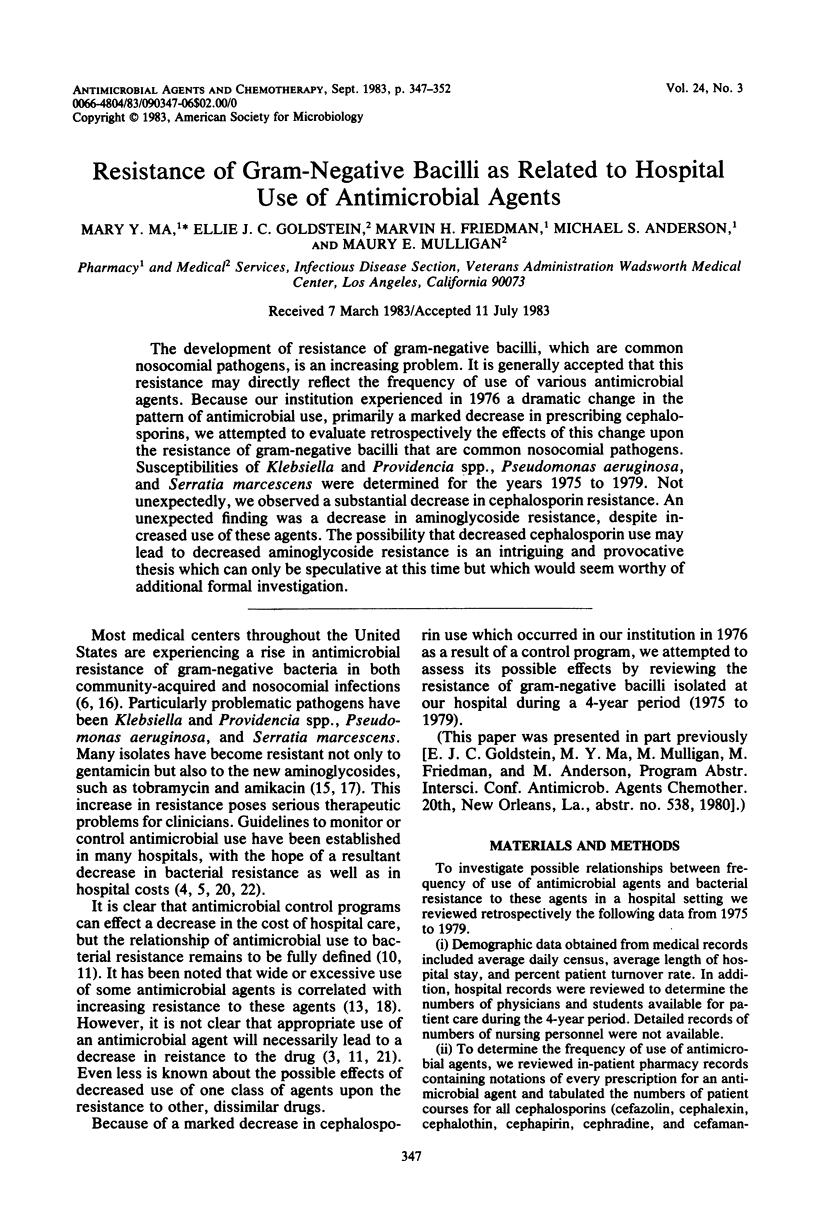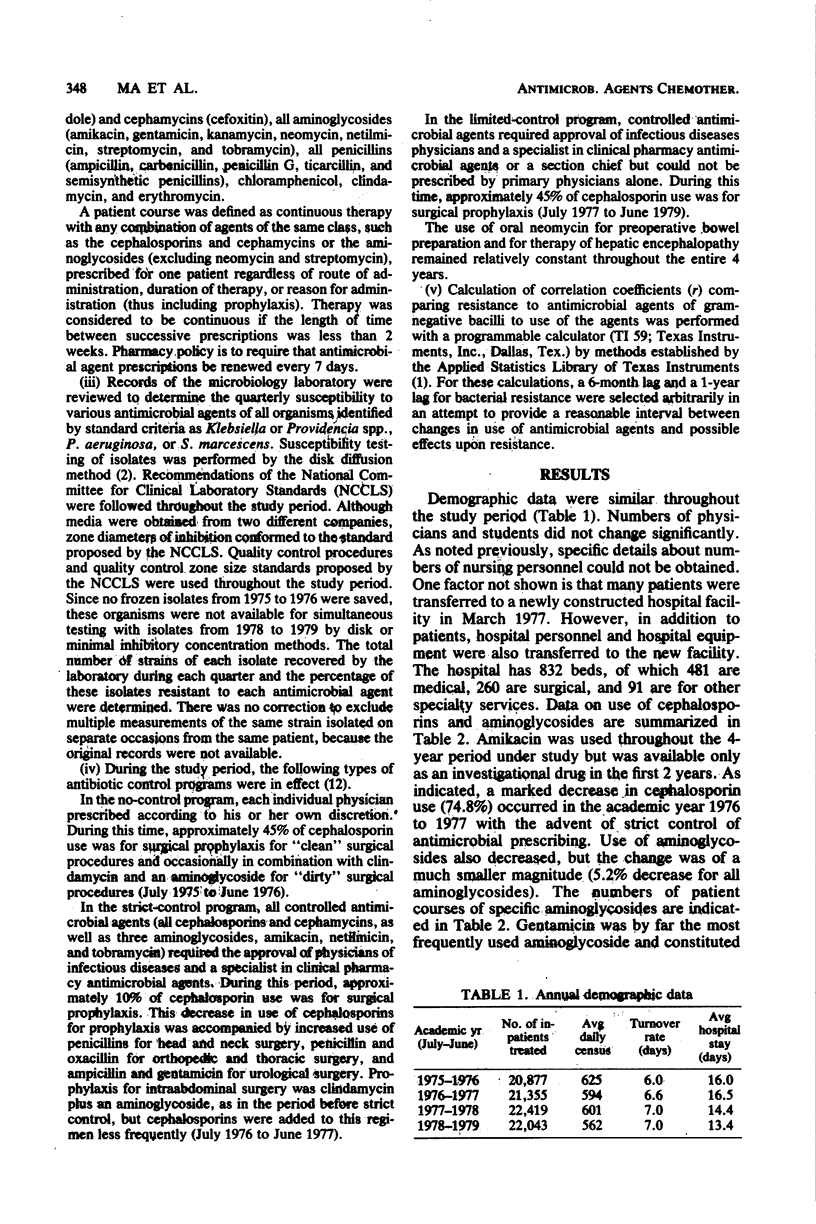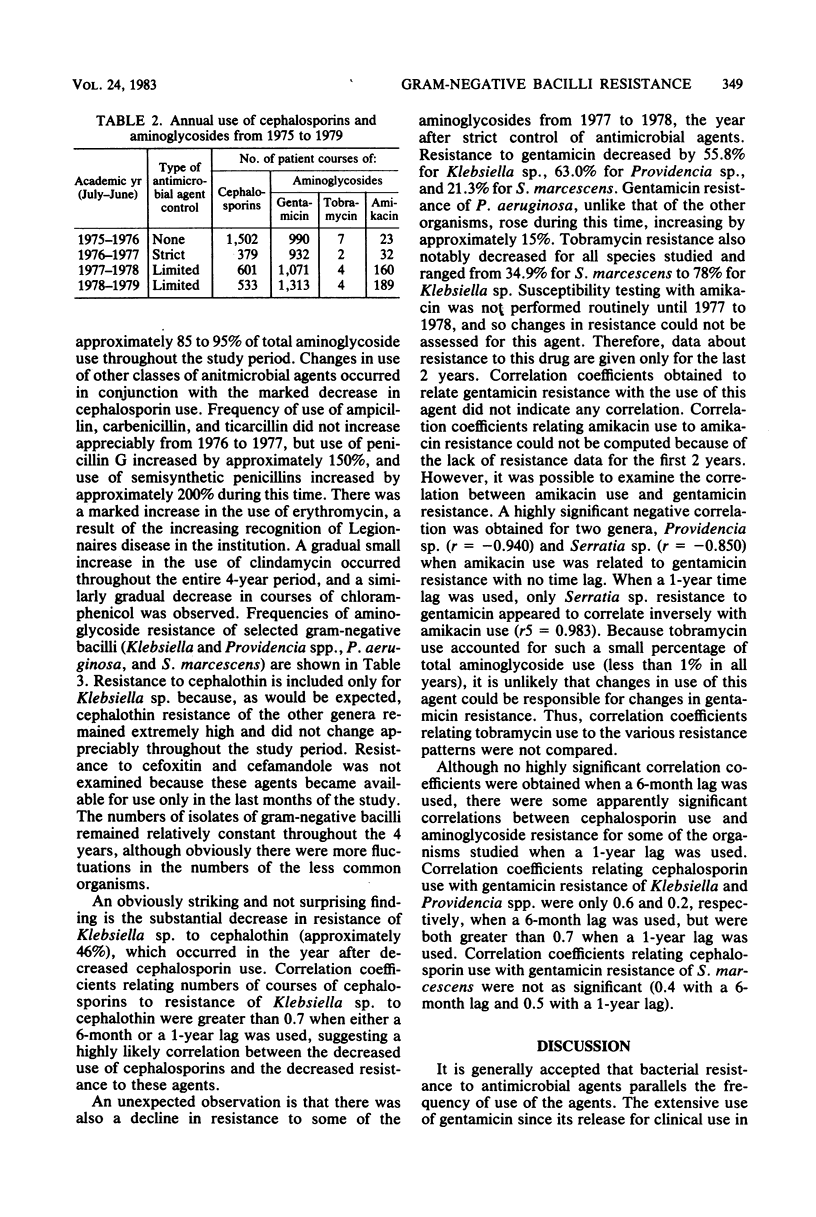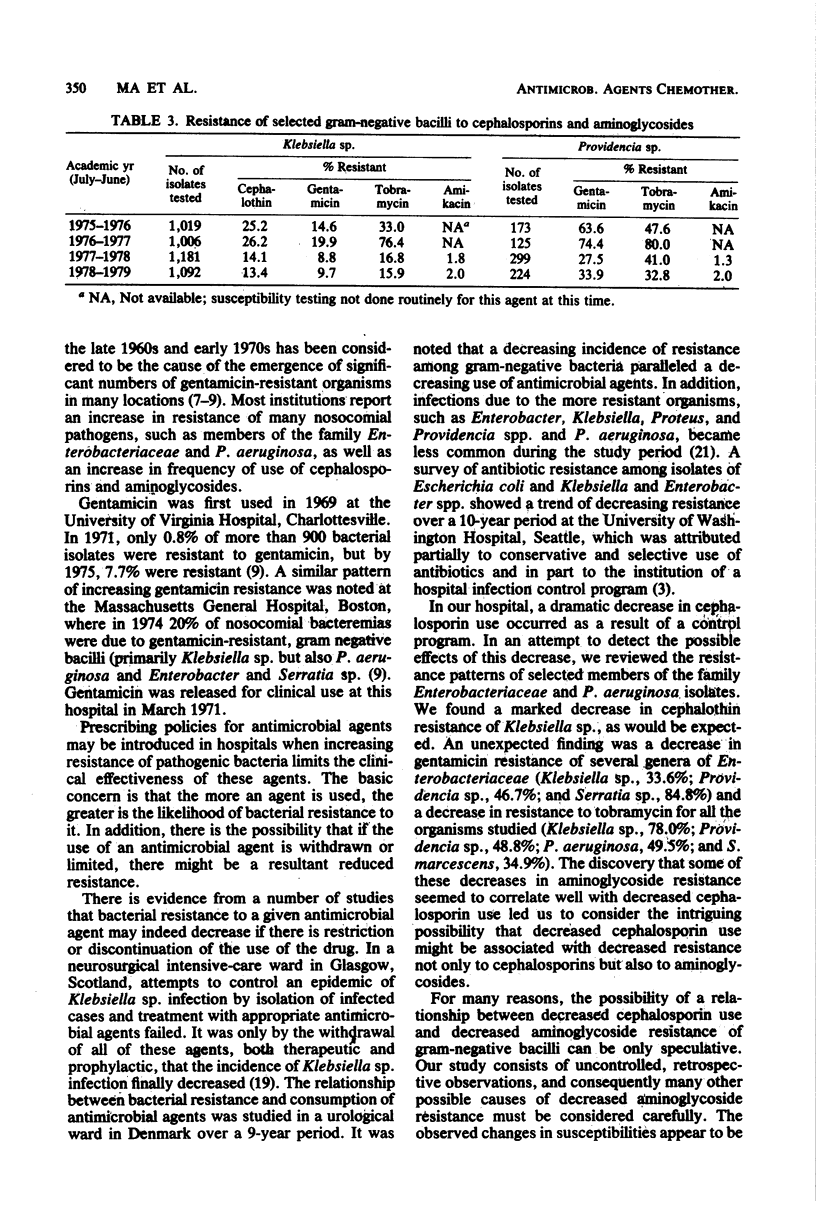Abstract
The development of resistance of gram-negative bacilli, which are common nosocomial pathogens, is an increasing problem. It is generally accepted that this resistance may directly reflect the frequency of use of various antimicrobial agents. Because our institution experienced in 1976 a dramatic change in the pattern of antimicrobial use, primarily a marked decrease in prescribing cephalosporins, we attempted to evaluate retrospectively the effects of this change upon the resistance of gram-negative bacilli that are common nosocomial pathogens. Susceptibilities of Klebsiella and Providencia spp., Pseudomonas aeruginosa, and Serratia marcescens were determined for the years 1975 to 1979. Not unexpectedly, we observed a substantial decrease in cephalosporin resistance. An unexpected finding was a decrease in aminoglycoside resistance, despite increased use of these agents. The possibility that decreased cephalosporin use may lead to decreased aminoglycoside resistance is an intriguing and provocative thesis which can only be speculative at this time but which would seem worthy of additional formal investigation.
Full text
PDF





Selected References
These references are in PubMed. This may not be the complete list of references from this article.
- Bauer A. W., Kirby W. M., Sherris J. C., Turck M. Antibiotic susceptibility testing by a standardized single disk method. Am J Clin Pathol. 1966 Apr;45(4):493–496. [PubMed] [Google Scholar]
- Bulger R. J., Larson E., Sherris J. C. Decreased incidences of resistance to antimicrobial agents among Escherichia coli and Klebsiella-enterobacter. Observations in a university hospital over a 10-year period. Ann Intern Med. 1970 Jan;72(1):65–71. doi: 10.7326/0003-4819-72-1-65. [DOI] [PubMed] [Google Scholar]
- Counts G. W. Review and control of antimicrobial usage in hospitalized patients. A recommended collaborative approach. JAMA. 1977 Nov 14;238(20):2170–2172. [PubMed] [Google Scholar]
- Craig W. A., Uman S. J., Shaw W. R., Ramgopal V., Eagan L. L., Leopold E. T. Hospital use of antimicrobial drugs. Survey at 19 hospitals and results of antimicrobial control program. Ann Intern Med. 1978 Nov;89(5 Pt 2 Suppl):793–795. doi: 10.7326/0003-4819-89-5-793. [DOI] [PubMed] [Google Scholar]
- Finland M. Changing patterns of susceptibility of common bacterial pathogens to antimicrobial agents. Ann Intern Med. 1972 Jun;76(6):1009–1036. doi: 10.7326/0003-4819-76-6-1009. [DOI] [PubMed] [Google Scholar]
- Forbes I., Gray A., Hurse A., Pavillard R. The emergence of gentamicin-resistant klebsiellae in a large general hospital. Med J Aust. 1977 Jan 1;1(1-2):14–16. doi: 10.5694/j.1326-5377.1977.tb130463.x. [DOI] [PubMed] [Google Scholar]
- Greene W. H., Moody M., Schimpff S., Young V. M., Wiernik P. H. Pseudomonas aeruginosa resistant to carbenicillin and gentamicin. Epidemiologic and clinical aspects in a cancer center. Ann Intern Med. 1973 Nov;79(5):684–689. doi: 10.7326/0003-4819-79-5-684. [DOI] [PubMed] [Google Scholar]
- Guerrant R. L., Strausbaugh L. J., Wenzel R. P., Hamory B. H., Sande M. A. Nosocomial bloodstream infections caused by gentamicin-resistant gram-negative bacilli. Am J Med. 1977 Jun;62(6):894–901. doi: 10.1016/0002-9343(77)90658-1. [DOI] [PubMed] [Google Scholar]
- Katz E., Schlamowitz S. Savings achieved through cephalosporin surveillance. Am J Hosp Pharm. 1978 Dec;35(12):1521–1523. [PubMed] [Google Scholar]
- Ma M. Y., Goldstein E. J., Meyer R. D. Effect of control programs on cefazolin prescribing in a teaching hospital. Am J Hosp Pharm. 1979 Aug;36(8):1055–1058. [PubMed] [Google Scholar]
- Maki D. G., Alvarado C. J., Hassemer C. A., Zilz M. A. Relation of the inanimate hospital environment to endemic nosocomial infection. N Engl J Med. 1982 Dec 16;307(25):1562–1566. doi: 10.1056/NEJM198212163072507. [DOI] [PubMed] [Google Scholar]
- Minshew B. H., Pollock H. M., Schoenknecht F. D., Sherris J. C. Emergence in a burn center of populations of bacteria resistant to gentamicin, tobramycin, and amikacin: evidence for the need for changes in zone diameter interpretative standards. Antimicrob Agents Chemother. 1977 Dec;12(6):688–696. doi: 10.1128/aac.12.6.688. [DOI] [PMC free article] [PubMed] [Google Scholar]
- Mitsuhashi S. The R factors. J Infect Dis. 1969 Jan;119(1):89–100. doi: 10.1093/infdis/119.1.89. [DOI] [PubMed] [Google Scholar]
- Moellering R. C., Jr, Wennersten C., Kunz L. J., Poitras J. W. Resistance to gentamicin, tobramycin and amikacin among clinical isolates of bacteria. Am J Med. 1977 Jun;62(6):873–881. doi: 10.1016/0002-9343(77)90655-6. [DOI] [PubMed] [Google Scholar]
- Murray B. E., Moellering R. C., Jr Patterns and mechanisms of antibiotic resistance. Med Clin North Am. 1978 Sep;62(5):899–923. doi: 10.1016/s0025-7125(16)31746-1. [DOI] [PubMed] [Google Scholar]
- Price D. J., Sleigh J. D. Control of infection due to Klebsiella aerogenes in a neurosurgical unit by withdrawal of all antibiotics. Lancet. 1970 Dec 12;2(7685):1213–1215. doi: 10.1016/s0140-6736(70)92179-3. [DOI] [PubMed] [Google Scholar]
- Smith J. W., Jones S. R. An educational program for the rational use of antimicrobial agents. South Med J. 1977 Feb;70(2):215-8, 221. doi: 10.1097/00007611-197702000-00034. [DOI] [PubMed] [Google Scholar]


